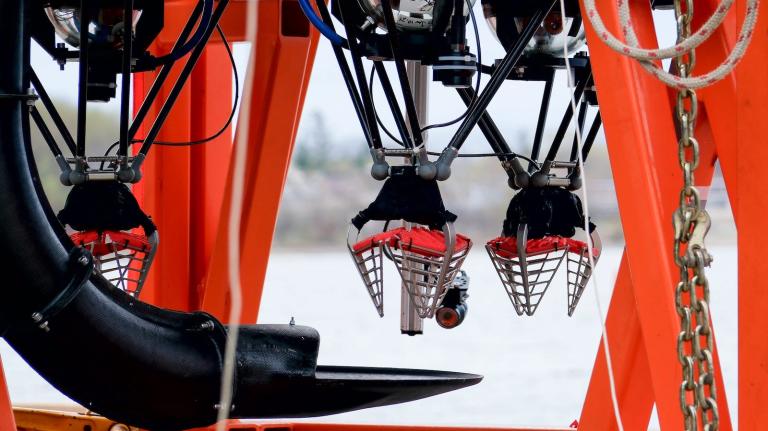There was some curiosity as to what stance U.S. Department of Agriculture chief Tom Vilsack would take in his speech this week before the National Association of Wheat Growers. Surprisingly, he came as the bearer of bad tidings. According to this report:
Vilsack called on farmers to accept the political reality that U.S. farm program direct payments are under fire both at home and abroad and therefore farmers should develop other sources of income. In his remarks to the groups he said he intends to promote a far more diversified income base for the farm sector, saying that windmills and biofuels should definitely be part of the income mix and that organic agriculture will also play an increasing role.
Secure · Tax deductible · Takes 45 SecondsSecure · Tax deductible · Takes 45 Seconds
Um, what? Leave aside the “prepare for a pay cut” thing for a moment. Did Vilsack just use the O-word in front of a bunch of large-scale industrial farmers? Once they stopped laughing, I wonder if they starting thinking about the implications of what he was saying. Maybe this guy is for real.
Vilsack’s comments certainly jibe with his plans for the new USDA Office for Ecosystem Services and Markets — an entity that is charged with cataloging the climate impacts of forestry and farming practices. The Christian Science Monitor characterized it thusly:
The idea is to nurture food- and fiber-producing activities that are more climate-friendly. Over time, [OESM Head Sally] Collins says by phone from Washington, “Where we go from here will alter the discussion of how the country thinks about natural resources.”
The program will be similar to payments farmers currently receive to rest their land in order to preserve the soil, restoration of wetlands along rivers by municipalities to promote water quality and flood control, and “biodiversity banks” in which landholders that affect habitat for endangered species are required to provide equal or greater amount of habitat elsewhere.
If implemented on a significant scale, that would be pretty radical — and an interesting way to wean farmers off commodity crop subsidies while creating incentives for adopting sustainable agriculture practices. Maybe that’s why the USDA just announced a pilot project that will let wheat, corn and soy farmers who receive subsidies to plant vegetables on their so-called “base acreage,” a practice that is currently illegal — to set the stage for this kind of transition.
While I, like others, want broad reform as soon as possible, it’s crucial that industrial farmers be brought along slowly and are properly prepared for what’s ahead. Otherwise we risk another replay of the dynamic from the debate over the 2008 Farm Bill when, as sustainable ag advocates admit, they portrayed industrial farmers as obstacles to, rather than partners in, reform.
You need only to look at Europe to see where this kind of conflict will lead. Industrial farmers and environmentalists in Britain are right now engaged in a fierce fight over the EU’s soon-to-be finalized pesticide ban. Though the ban won’t take effect for several years, conventional farmers are already warning of disaster — whole crops being lost, huge increases in prices and the end of farming in Britain — while sustainable ag proponents yell back that organic yields are just as high and farming without pesticides isn’t only possible, it’s necessary.
Caught in the middle is the U.K. government, which, while vigorously opposing the ban, will still need to help British farmers adapt. Their USDA equivalent, Defra, is planning a new green-oriented agricultural research center and is publishing a new Green Farming Guide. Somehow that doesn’t quite seem like enough. If the proper groundwork isn’t laid here in the US, the British battles will look positively sedate. It certainly looks like Vilsack gets this. It will be interesting to see how our Big Ag responds.


